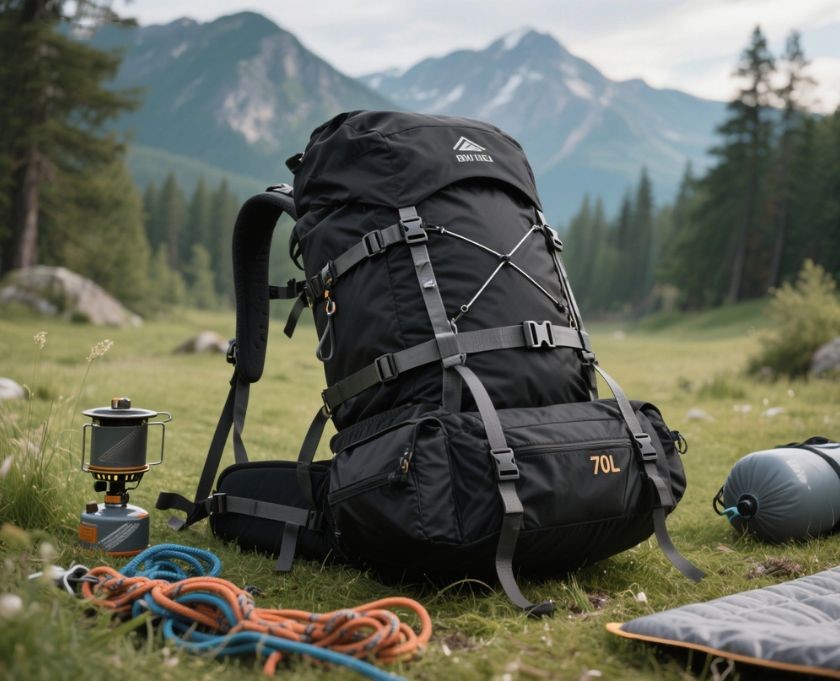Beautiful Plants For Your Interior

When choosing a backpack for travel or hiking, capacity is one of the most important factors. Backpacks typically range from compact 20L daypacks to massive 90L expedition packs. But most adventurers end up choosing between 30L, 50L, and 70L backpacks.
This guide will help you compare these three sizes, understand their strengths and weaknesses, and choose the right one for your needs.
Why Backpack Capacity Matters
Backpack size determines:
- How much gear you can carry.
- The weight you’ll put on your back.
- Whether your trip feels light and comfortable or heavy and exhausting.
Choosing the wrong capacity often leads to overpacking or underpacking, both of which make your journey harder.
Understanding Backpack Volume (Liters Explained)
The “L” in backpacks (like 30L, 50L, 70L) refers to volume in liters. This measures internal storage capacity, not weight.
For example:
- 30L ≈ Fits essentials for 1-day trips.
- 50L ≈ Suited for 2–4 days with gear.
- 70L ≈ Perfect for week-long or expedition-style adventures.
The 30L Backpack
Ideal Use Cases
- Day hikes.
- Commuting and city travel.
- Minimalist weekend trips.
Pros of a 30L Backpack
- Lightweight and easy to carry.
- Fits airline cabin requirements.
- Encourages minimalist packing.
Cons of a 30L Backpack
- Too small for camping gear or long hikes.
- Limited clothing and food storage.
- Not ideal for cold-weather trips.
The 50L Backpack
Ideal Use Cases
- Weekend hikes (2–4 days).
- Carrying a tent, sleeping bag, and cooking gear.
- Backpacking in warm climates.
Pros of a 50L Backpack
- Perfect balance between size and weight.
- Can handle short camping trips.
- More versatile than 30L or 70L.
Cons of a 50L Backpack
- May be too bulky for city travel.
- Doesn’t fit extra gear for very long expeditions.
The 70L Backpack
Ideal Use Cases
- Multi-day treks (5–10 days).
- Cold-weather trips requiring bulky gear.
- Backpacking through multiple countries.
Pros of a 70L Backpack
- Maximum storage for extended travel.
- Fits tent, sleeping gear, food, and clothes.
- Great for expedition-level hiking.
Cons of a 70L Backpack
- Heavy, even when empty.
- Not allowed as carry-on for flights.
- Tempts you to overpack.
30L vs 50L vs 70L: Direct Comparison
Weight Capacity
- 30L: ~5–8 kg.
- 50L: ~10–15 kg.
- 70L: ~15–25 kg.
Comfort & Fit
- 30L: Best for light trips.
- 50L: Balanced, fits most body types.
- 70L: Requires strong back and hips.
Travel & Hiking Flexibility
- 30L: Perfect for city + short hikes.
- 50L: Great for mixed use.
- 70L: Best for long treks only.
Durability & Cost
- Larger packs usually cost more and weigh more.
Choosing Based on Adventure Type
- Day Hikes & City Trips → 30L
- Weekend Hiking Trips → 50L
- Long Expeditions → 70L
Common Mistakes When Choosing Backpack Size
- Buying too large and overpacking.
- Ignoring body type and comfort.
- Choosing a size without testing it.
Expert Tips for Selecting the Right Backpack
- Always try on backpacks before buying.
- Load them with weight to simulate real use.
- Adjust straps to ensure proper fit.
FAQs
1. Can I travel internationally with a 50L backpack as carry-on?
Usually no, most airlines only allow 30–40L.
2. Is a 70L backpack too big for beginners?
Yes, unless you plan multi-day treks.
3. Which size is most versatile?
50L — works for most 2–4 day trips.
Conclusion
Backpacks come in many shapes and sizes, but 30L, 50L, and 70L are the most common choices.
- 30L: Best for short hikes and minimalist travel.
- 50L: Balanced option for weekends and lightweight camping.
- 70L: Designed for serious expeditions.
Choose wisely, and your backpack will make every adventure easier.